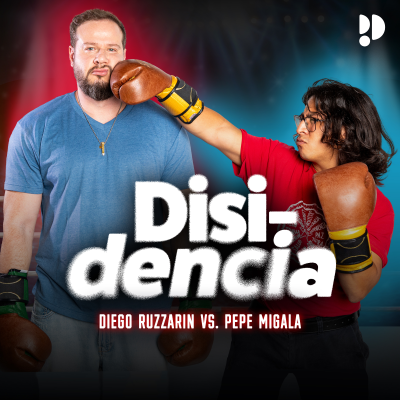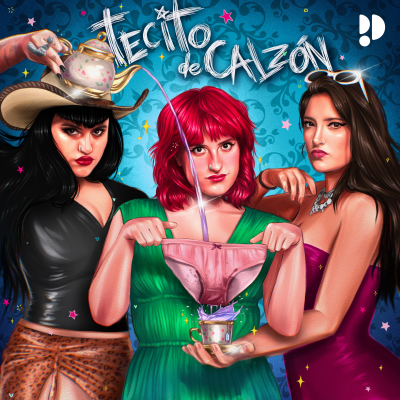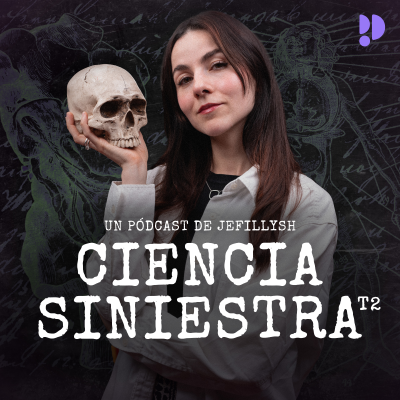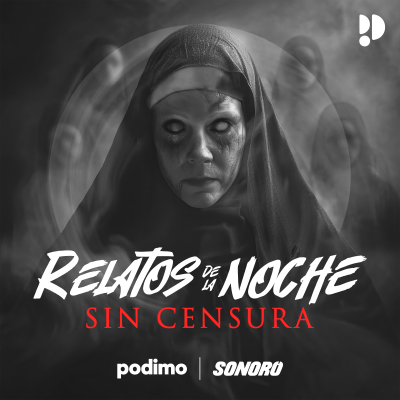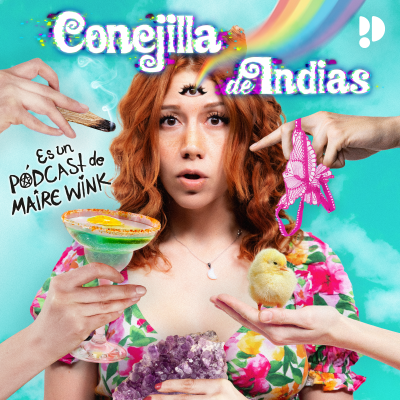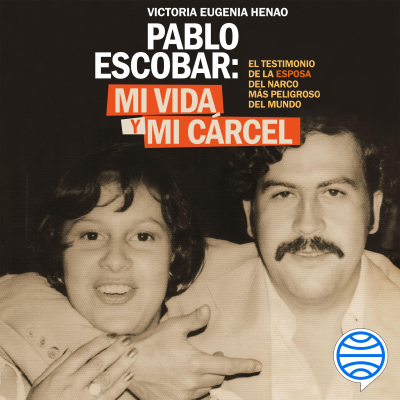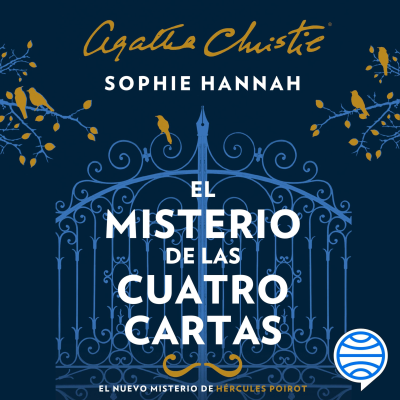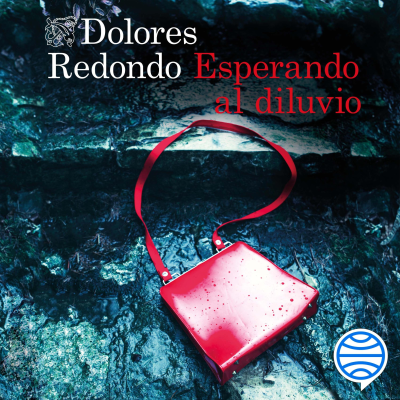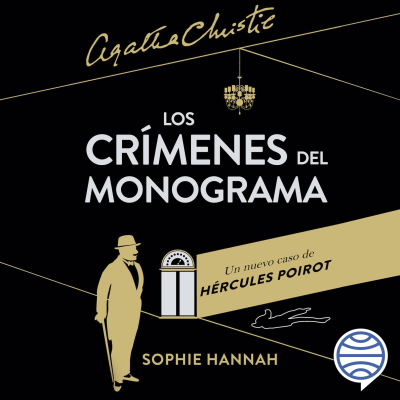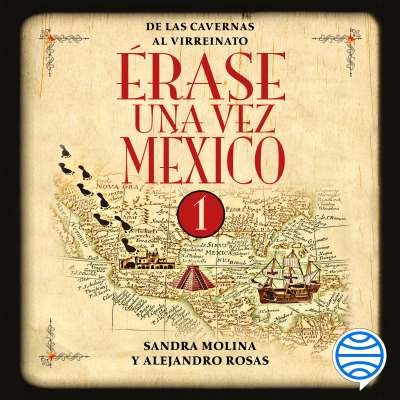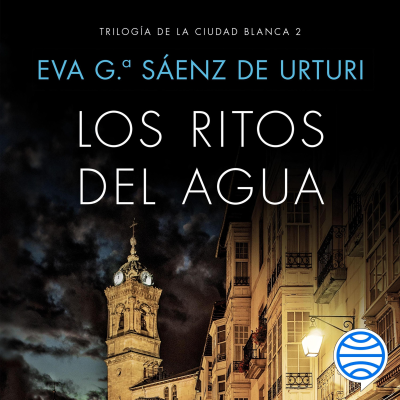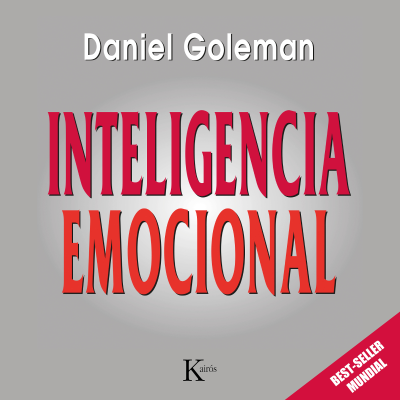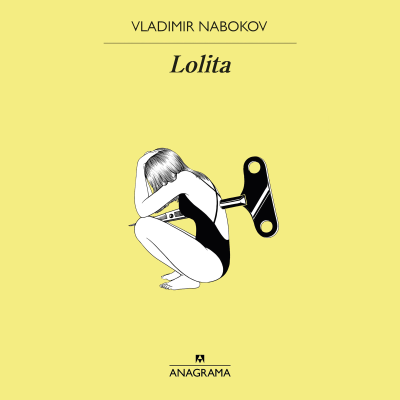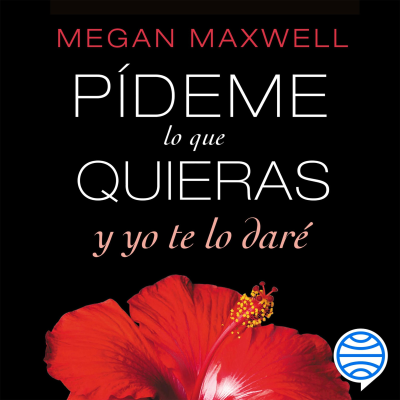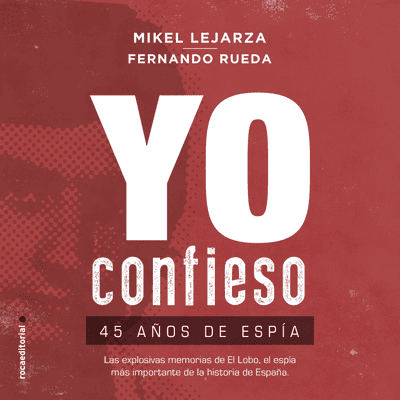
Radio Free Golgotha - Radio Free Golgotha
English
Limited Offer
1 month for 9 kr.
Then 99 kr. / monthCancel anytime.
- 20 hours of audiobooks / month
- Podcasts only on Podimo
- All free podcasts
About Radio Free Golgotha - Radio Free Golgotha
Radio Free Golgotha is a semi-regular podcast of the occult and esoteric ramblings of Al Cummins & Jesse Hathaway Diaz, and their guests. Each episode is based around a chosen Saint or Angel, Demon or Devil, Herb, Stone, Geomantic Figure, Tarot Trump, and more as the intersections and trajectories are explored through the discussions between these two friends.
All episodes
46 episodesEpisode 50: The Beheading of Saint John the Baptist
[https://images.squarespace-cdn.com/content/v1/586f532229687f84110099ab/f5c409b1-ca57-4eda-9077-c65cc29864a1/Episode+50.png?format=1000w] Welcome one and all, as we mark the Feast of the Beheading of the Baptist, and indeed our fiftieth episode of RFG! Marking this holyday of decapitation, we are delighted to bring you an especially head-y installment this time. Our Sainted Day is Decollation of Saint John the Baptist, prompting discussion of both the church history and popular myths of this relic’d skull and its wandering jaw. Our counterparted Demon(ised) is none other than Salome, assessing the myth and meanings of this figure and her relationship with Herodias as seductress and witch icon across the world. Our Herb is Life-Everlasting, affording analysis of this yellow greenery and its charms of longevity. Our Mineral is the many-hued Agate, concentrating on the Orpheus Agate; diving into the Orphic lapidary epic Lithika and the use of such stones in propitiation and protection. Our Form of Magic is Prophetic Heads, surveying legendary and historical accounts of cephalomancy, talking skulls, and artificial brazen heads. Our Beast is the Unicorn, considering religious cryptozoology, natural magic, bestiary lore, and the historical trade and application of its powdered horn. Our Daysign is Itzcuintli, the Dog; meditating on Mictlantecuhtli and the chthonic Mesoamerican associations and meanings of this trusty sign of the dead. Our Figure spurs conversation on the Earthy Venusian geomancy of Amissio (Loss) and its counterparting Odu of Ifa and Diloggun, Oshe Meji. Our Arcana of the Tarot is the Two of Swords; delving into both Spanish cartomantic meanings and “Western” occultural significances of choice and clarity. Our Dead Magician is Orpheus, the ancient beheaded bard of bards, tragic underworld troubadour, and patron of those mysteries we call Orphic. We hope, as always, you enjoy this decollated assemblage of talking points and headwords as much as we did in recording this especially lengthy folk necromantic co-ramble, and wish you excellent tidings in all your unveiling dances and skullduggery. FOOTNOTES: Footnotes for this episode will soon be available for selected tiers of our Patreon [https://www.patreon.com/radiofreegolgotha]. This episode is also available on YouTube [https://youtu.be/Y-u9nsJRu9Q?si=J6f66OIOGR-HAYhk], Apple Podcasts [https://podcasts.apple.com/us/podcast/radio-free-golgotha-radio-free-golgotha/id1193023651], and Spotify [https://open.spotify.com/show/2YjY0YUnCCiO06QQk9u4N7]. You can support our work and deep dive into the episodes and RFG via our Patreon [https://www.patreon.com/radiofreegolgotha]!
Episode 49: The Feast of Saint Elijah
[https://images.squarespace-cdn.com/content/v1/586f532229687f84110099ab/da0a7da2-549b-4580-b0dd-f42c6da07706/Episode+49.png?format=1000w] Welcome Golgothites, we wish you an excellent Feast of Saint Elijah. In honour of this day and indeed this holy figure of the Abrahamic faiths, we bring you a bevvy of topics co-mingling fiery and watery mysteries. Our Saint (and Prophet and perhaps Angel) is San Elias, the prophet Elijah, who ascended to heaven in a whirlwind chariot, and extends his mantle and wisdom in his returns to earth. Our Demon (indeed Queen of Demons) is Lilith; affording us a deep-dive into ancient, medieval, and early modern demonology, midrash, the heresies and hallowings of witchcraft, and much more besides. Our Herb is Willow, the One-That-Weeps, Lunary tree of Lunary Waters; boughs that bend, weave, and root; balm and bane of the living and the dead. Our Mineral is Citrine, lighting our way to consider lapidary title-shuffles of Solary golden stones, the yellowing processes of alchemy, merchant’s stones, and more. Our Style of Magic is Card Magic, prompting discussion of divination, gambling, the manipulations of significators, and where the sortilege meets the sorcery. Our Beast is Sheep, placid phlegmatic wool-bearer; by which we compare and contrast the differing lores of rams and lambs from ewes. Our Daysign is Atl (Water), whose non-oppositional duality with fire which presents fascinating contrasts to some often-unexamined assumptions of Western occult philosophy. Our Figure is the geomantic Cauda Draconis, The Dragon’s Tail, explosively Fiery figure of Saturn and Mars, and its counterparting Odu of Ifa and Diloggun, Ogunda Meji, sparking talk of creative destruction, rational action in the heat of crisis, and mysteries of war. Our Tarot is the Two of Wands, allowing us contrast between the energetic Fiery Wands in Thelemic conceptions, and melancholic Earthy Bastos in Spanish cartomancy. And our Dead Magician/Sorceress/Witch Queen is none other than María Díaz de Padilla; tracing the afterlife of a king’s mistress crowned queen of earth in hell, whose legions champion the ambitions of women and the oppressed across terreiros of Quimbanda to this day as Pombagira Maria Padilha. We hope you enjoy this extended and animated discussion of these flaming topics, and we wish you all a very pleasant hot hag summer! FOOTNOTES: Footnotes for this episode will soon be available for selected tiers of our Patreon [https://www.patreon.com/radiofreegolgotha]. This episode is also available on YouTube [https://youtu.be/-7Yz12yB2pA], Apple Podcasts [https://podcasts.apple.com/us/podcast/radio-free-golgotha-radio-free-golgotha/id1193023651], and Spotify [https://open.spotify.com/show/2YjY0YUnCCiO06QQk9u4N7]. You can support our work and deep dive into the episodes and RFG via our Patreon [https://www.patreon.com/radiofreegolgotha]!
Episode 48: The Feast of Saint Anthony of Padua
[https://images.squarespace-cdn.com/content/v1/586f532229687f84110099ab/e02ce276-06d1-4858-8beb-f8e820990868/Episode+48.png?format=1000w] Merry Feast of Saint Anthony and indeed Happy Friday 13th, Golgothii! This, our forty-eighth episode, sees us celebrating – amongst other things – Saint Anthony’s incorruptible tongue, his veneration across the world, and his patronage of finding lost things, along with his many syncretisations across Worlds both Old and New with powers of doorways and the streets. Our Demon(ised) patron of this episode is Eshu/Exu, that deified crossroads power who finds expression as Legba, Eleggua, and as Exu of Quimbanda: the Owner of the Road, the divinely-restless and rebellious movement of vital virtue and axé, and demonized trickster-friend who accuses and upturns towards good character and ancestral harmony. Our Herb this time is Belladonna aka Deadly Nightshade, prompting discussion of toxicity, the coolness of sleep and death, witches’ flying ointments, and the both Venusian and Saturnine qualities of Atropos and her fatal scissors. Our Mineral is Yangi aka Laterite, a stone so intrinsically tied to Eshu veneration and practice, upon which we pour the palm oil of slickened communication and the lubrication of the frictions of the world. Our Magic is Idols, inspiring conversation about accusations of idolatry, and weighing both metaphysical representation and spiritual ontology; as well as some post-colonial considerations of fetishes and fetishism. Our Daysign is Tochtli (Rabbit), a day intimately tied into passages of the moon, service to things bigger than ourselves, and indeed with Mayahuel, goddess of both fertility and maguey. Our Beast is the Rooster, hot-blooded courageous crier of the barnyard, whose crowing call wards off ghosts and night-wanderers, and whose meat empowers broths and baths of choleric boldness and healing. Our Geomantic Figure is Airy Solary Fortuna Minor, the Lesser Fortune: a marker of choler, and swiftness, that loyal but distractable escapologist who turns bad fortunes into good and vice versa; comparing and contrasting the warnings and familial remediations of the Odu Irosun Meji of Ifa and Diloggun. Our Tarot of the day is the Two of Cups, by which we consider divinatory markers of love, fulfilling and unfulfilling relationships, caduceuses, and domestic as well as interpersonal bonds and boundaries. Our Dead Magician to play us out is Jubiabá, the infamous Candomble de Caboclo priest and macumbeiro who courted controversy with the religious purists and local authorities of his day, whose Chair was lost and restored, and who was fictionalized in the eponymous novel by Jorge Amado. We thank you for joining us in this two-headed exploration of both crowing and minding tongues, of meaningful relationships and the arguments you survive, and the ever-unfolding creativities of the crossroads. FOOTNOTES: Footnotes for this episode will soon be available for selected tiers of our Patreon [https://www.patreon.com/radiofreegolgotha]. This episode is also available on YouTube [https://youtu.be/y-UDkYSerjU], Apple Podcasts [https://podcasts.apple.com/us/podcast/radio-free-golgotha-radio-free-golgotha/id1193023651], and Spotify [https://open.spotify.com/show/2YjY0YUnCCiO06QQk9u4N7]. You can support our work and deep dive into the episodes and RFG via our Patreon [https://www.patreon.com/radiofreegolgotha]!
Episode 45: The Feast of Saint Patrick
[https://images.squarespace-cdn.com/content/v1/586f532229687f84110099ab/d97c44e6-a286-4528-b5e0-42271e08ae2b/Episode+45-+Patrick.png?format=1000w] Welcome Golgothers to our forty-fifth episode, celebrating the Feast of St Patrick with a plethora of serpentine slitherings! Saint Patrick – apostle of Ireland, bane of serpents, shamrock evangelist, bearer of the hymnal breastplate, and reviver of the dead – affords us hagiographic discussion of shifting depictions of this saint and receptions of his impact, “All Snakes Day”, and what-even-is-Celtic. Our Demon is Apep, opening up conversation about when a cosmic force is “demonic”, as well as considerations of embodying darkness, depicting the cyclopean, eating souls, and how nothing burns like an effigy. Our Herb is Clover, prompting consideration of leaf-numerology, lucky anti-venoms, gardening for happy marriage and home-protection, and the myriad tiny fortunes of the fields. Our Mineral is Coral, the branching blood of Gorgons, whereby we consider teething-charms, magical lightning-insurance, the pater de sang, and valuable early modern lapidary medicine. Our Beast is the Basilisk, wending our heraldic way firmly into mythological zoology to survey stone-breaking noxious breath, the optics of the scorching gaze, and how to even study a monstrous animal who petrifies its observers. Our Daysign is, of course, Coatl (Snake), unwinding discussion of both the feathered serpent deity Quetzalcoatl and Chalchihuitlicue, goddess-force of running water and oceans, to consider the humility of how rivers change-without-changing and how to make the most of the fleeting without succumbing to short-term self-interest. Our Figure is Tristitia, Sorrow, through whose dim cloudy hollows we consider anxiety, fateful lots of disappointing events, and anti-melancholy regimens; counterparting these lessons with those of the Odu Okana Meji in corpuses of Traditional African and Afro-Diasporic wisdom. Our Tarot is the Ace of Swords, by which we analyse analytical faculties themselves, the mysticism of blades in ceremonial magic, and take in the grounded mysteries of this card in Spanish cartomancy. Our Dead Magician is none other than Faust himself; surveying both the historical evidence and legendary tales of this soul-bargaining conjuror, the character of Mephistopheles, and indeed the Germanic milieu and folk necromantic methodologies of the Faustian grimoires ascribed to his patronage. Whether shedding old skin or harkening to the hisses of old cunning ways, we hope you enjoy listening to this snaking episode as much as we did conjuring it into being by the forked tongues of our two-headed banter. FOOTNOTES: Footnotes for this episode will soon be available for selected tiers of our Patreon [https://www.patreon.com/radiofreegolgotha]. This episode is also available on YouTube [https://youtu.be/mo4KI1A4vuA], Apple Podcasts [https://podcasts.apple.com/us/podcast/radio-free-golgotha-radio-free-golgotha/id1193023651], and Spotify [https://open.spotify.com/show/2YjY0YUnCCiO06QQk9u4N7]. You can support our work and deep dive into the episodes and RFG via our Patreon [https://www.patreon.com/radiofreegolgotha]!
Episode 44: The Feast of the Chair of Saint Peter
[https://images.squarespace-cdn.com/content/v1/586f532229687f84110099ab/251eb80a-8efd-44ce-91be-661622fda4d3/Episode+44-+Chair.png?format=1000w] Welcome dear gentle listener to our forty-fourth episode, in which we honour the Feast of the Chair of St Peter. This holyday – dedicated less to a saint than their relic – sees us talking about the seat of papal authority of Rome, the Petrine importance of Antioch, the matryoshka qualities of medieval-style reliquaries, the “throne of Theseus”, apostolic succession, and what it means to be the Rock upon which the Church is founded. Our patron Demon for today is Trimasael, alchemical and many-aliased devil of the Grimorium Verum, by which we talk powders of projection and transmutations of metals; as well as muse on their sometimes-counterparted Exu of Quimbanda, Seu Pimenta, pondering on what it means to be a spirit who is (like) a pepper… Our Herb of the hour, Storax, allows us to delve into some resinous mysteries of archaeo-botany and consider when plant-names are more descriptors than definitions, as well as how both recipes and titles are informed by ancient trade routes, and how planetary associations can shift. Our Mineral this time is Cinnabar, ancient and once more alchemical ore of mercury, and constituent of the pigments called vermillion; by whose red-tinted light we illuminate a bloody history of mining, mercury poisoning, and Renaissance tips on getting the best colours. Our emblematic Beast is the Wolf, the night-wanderer, the wild and ravenous one who infiltrates civilization, both guileful and blood-simple; considering animals fables, the birth of Rome, animalia materia, and choleric virtues and vices. Planetary Hours are the Style of Magic we tackle this episode, considering rules-of-thumb for natural kairotic (rather than quantative public) time, Chaldean zeitgeists, the peak magical moments of a day, and the cross-pollinations of astrological hours and days to tailor our sorcerous strategizing. Our Figure of the episode is the geomantic Laetitia and the Odu Obara, leading us to discuss both fieriness and the fiery-in-the-watery, along with the refreshing artisanship of joy and the revivification of inspiration. Our journey into the Minor Arcana of the Tarot continues with the Ace of Cups, exploring not only the mysticism of primal waters and phlegmatism but the hearth and wellspring of the family home, intersocial harmony, and the overflowing heart. Our explorations of Mesoamerican calendricals comes to Cuetzpalin, the Lizard: considering times of rapid transformation, turnarounds, and reversals of fortune under the patronages of tricksters and winter powers. Finally, our honoured Dead Magician this time is Arthur Gauntlet, the mid-seventeenth-century London cunning man who left one of the richest working-books of early modern folk magics: we consider not only what this spellbook offers us but also discuss working necromantically with Uncle Arthur’s bawdy ghost. We hope you enjoy this interweaving co-ramble of alchemical reddenings, chronomantic projections and proscriptions, and the chairs we leave out for the dead. As always, it is a ever-multiplying joy to sit down and record, and we at RFG HQ thank you for lending your kindly ears. FOOTNOTES: Footnotes for this episode will soon be available for selected tiers of our Patreon [https://www.patreon.com/radiofreegolgotha]. This episode is also available on YouTube [https://youtu.be/SQrKTBDB0Q8], Apple Podcasts [https://podcasts.apple.com/us/podcast/radio-free-golgotha-radio-free-golgotha/id1193023651], and Spotify [https://open.spotify.com/show/2YjY0YUnCCiO06QQk9u4N7]. You can support our work and deep dive into the episodes and RFG via our Patreon [https://www.patreon.com/radiofreegolgotha]!
Choose your subscription
Limited Offer
Premium
20 hours of audiobooks
Podcasts only on Podimo
All free podcasts
Cancel anytime
1 month for 9 kr.
Then 99 kr. / month
Premium Plus
Unlimited audiobooks
Podcasts only on Podimo
All free podcasts
Cancel anytime
Start 7 days free trial
Then 129 kr. / month
1 month for 9 kr. Then 99 kr. / month. Cancel anytime.


